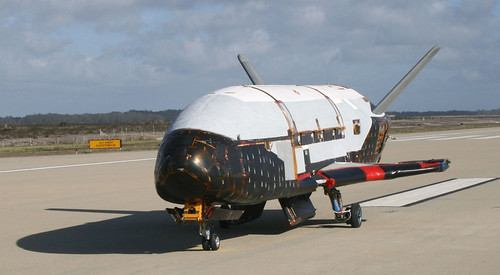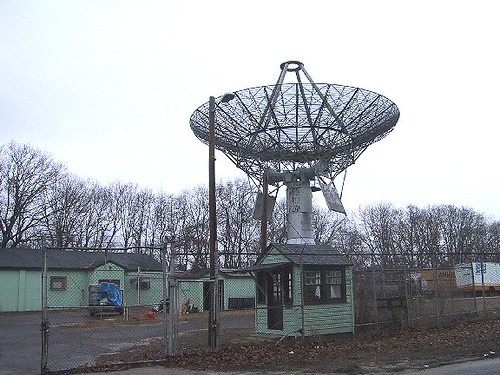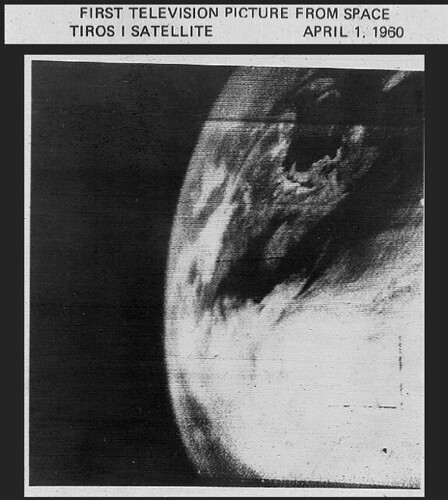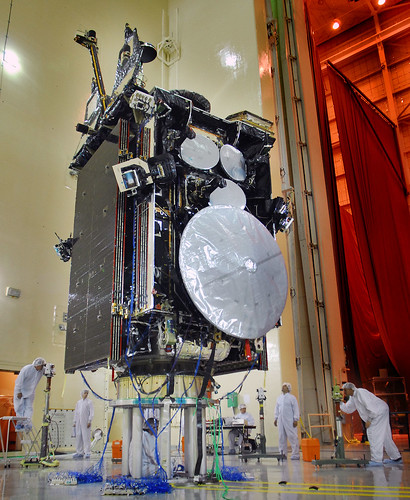Bubbling Crude
Friday, April 30th, 2010

MODIS, MERIS, ASAR, GOES: these orbiting spacecraft and instruments are focused on helping the NOAA figure this mess out. The mess is an oil spill in the Gulf of Mexico, approximately 50 miles offshore, estimated to be spitting out crude oil at a rate of 5,000 barrels per day.
A BP PLC executive told NBC’s "Today" show on Apr. 29 that the oil leak in the Gulf of Mexico could be five times larger than earlier believed. His comment came the day after a controlled burn on part of the oil spill and a third leak was found.
Doug Suttles, chief operating officer of BP Exploration & Production Inc., confirmed what US Coast Guard Rear Adm. Mary Landry first said at a hastily called news conference in a Louisiana command center late Apr. 28 in which she announced a third leak.
Landry estimated 5,000 b/d rather than the 1,000 b/d could be spilling into the gulf. For days, officials have estimated 1,000 b/d was leaking from the Macondo well Transocean Ltd.’s Deepwater Horizon semisubmersible drilled on Mississippi Canyon Block 252 in 4,992 ft of water near Rigel gas field. Deepwater Horizon was working for BP.
An Apr. 20 explosion and fire rocked the semi, leaving 11 crew members missing and presumed dead and injuring 17. A total of 115 people evacuated the rig. On Apr. 22, the semi sank. Cause of the accident remains under investigation.
On Apr. 29, Suttles said the leak could be as high as the USCG’s latest estimate. Previously, he had told reporters that it’s difficult and imprecise to measure spilled oil.
Call in the robots! But it won’t be quick. Responders are still figuring out new ways to use Remotely Operated Vehicles (ROVs) to try to trigger the blowout preventer (BOP), a series of valves that sits at the well head.
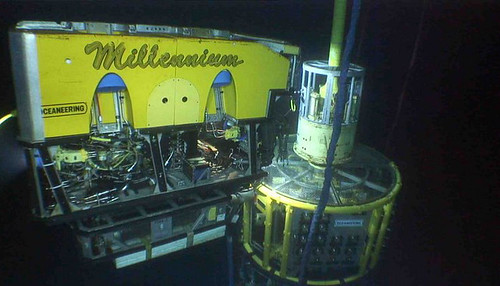
What NOAA is doing, as of 28 April 2010…
Current NOAA efforts are focused on: gathering more information about the spill, planning for open water and shoreline remediation, and readying for environmental assessment and response. Natural resource damage assessment (NRDA) activities are now underway.
- Winds are forecast to become strong (20+ kts) and blow from the southeast starting tomorrow and continuing through the weekend, which will continue to push surface oil towards shore
- NOAA oil-spill trajectory analyses indicate that oil continues to move towards shore.
- 100,000’ of oil-containment booms (or floating barriers) have been deployed as a precaution to protect sensitive areas in the Louisiana area.
- The effects of oil on sensitive habitats and shorelines in four states (LA, MS, AL, and FL) are being evaluated should oil from the incident make landfall in appreciable quantities
- NOAA’s Assessment and Restoration Division is evaluating concerns about potential injuries of oil and dispersants to fishes, human use of fisheries, marine mammals, turtles, and sensitive resources
- Baseline aerial surveys to assess marine life were conducted today with personnel from NOAA’s National Marine Fisheries Service (NMFS), these will continue as needed
NOAA Roles: NOAA is a vital part of the massive response effort on the Deepwater Horizon incident. Many personnel are on scene and many more are engaged remotely, as follows:
Office of Response and Restoration (OR&R)
- Scientific support to the U.S. Coast Guard and Unified Command
Emergency Response Division (ERD)
- Predict where the oil is going and its effects
- Overflight observations and mapping
- Identify resources at risk
- Predict fate (chemical changes) of oil
- Recommend appropriate clean-up methods
- Manage data and information
Assessment and Restoration Division (ARD)
- Plan for assessment of injuries to natural resources
- Coordinate with state and federal trustees
- Implement sampling plans
National Weather Service
- Incident weather forecasts including marine and aviation
National Environmental Satellite, Data, and Information Service (NESDIS)
- Experimental imagery for spill trajectory forecasts
National Marine Fisheries Service (NMFS)
- Issues related to marine mammals, sea turtles, and fishery resources
National Ocean Service
- Public Affairs support to Joint Information Center
Here’s your smokin’ video, courtest of the USCG…

